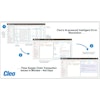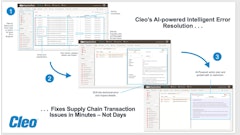
Consumers made it their mission to stock up on staples, including toilet paper, with panic buying rampant in the wake of the Coronavirus disease (COVID-19) pandemic. And, yet many were aghast to find store shelves completely barren in their time of need.
Of course, unknown to consumers, there was plenty going on behind the scenes, as manufacturers, distributors, retailers and supply and demand chain professionals within these organizations worked tirelessly on workarounds and resolutions.
“The toilet paper shortage of 2020” serves as an important parable, exposing weaknesses and dependencies in supply and demand chains and highlighting where and how technology can address these issues. As we look ahead at an eventual return to normalcy, savvy organizations will evaluate the “kinks in the chain” to earmark areas for improvement, so that they can be better prepared for the next crisis scenario.
Let’s trace the great run on toilet paper and walk through the various scenarios that played out in the manufacturing, distribution and retail sectors.
When manufacturers detected spikes in demand, they first looked for any contingency inventory to push forward. Next, they discontinued promotions currently in place to help temper demand and optimize pricing to maximize revenues.
Next, they analyzed Bills of Materials to understand the material component span of control and resources needed, which materials they produce themselves vs. goods sourced from elsewhere and what resources in production lines/machinery or labor were needed to ramp production. Manufacturers then determined which suppliers had raw material inventory on hand and/or whether the manufacturer needed to delve into the secondary supply base. A dual-sourcing or multiple supplier sourcing strategy necessitated short-term contracts for these temporary demand peaks.
Manufacturers may have also hosted online sourcing events or auctions to crowdsource suppliers meeting given criteria including the price point manufacturers are willing to pay and which the finished good market can bear.
At the end of this process flow, a revised production schedule was put in motion, with logistics coordinated to move the finished goods to market, working through the various transportation bottlenecks.
Meanwhile, on the buyer side, a grocery store for example, order management system tracks goods on hand and stock outs. When a stock out is imminent, an alert is triggered, which automatically generates a replenishment order from existing suppliers.
However, if there is a “run” on toilet paper, like what was seen in early March, buyers likely needed to look to alternate suppliers to support the spike in demand.
They likely had to create one-off orders to meet demand – a situation that in many cases can overwhelm accounts payable departments. The increased volume of suppliers, orders and purchase orders can also subject companies to a greater risk of fraud.
Lessons learned
Hindsight is 20/20, but it’s wise to evaluate technology and processes that would have helped support operational visibility and agility to alleviate the toilet paper pandemic situation.
In the area of supplier management, a supplier relationship management solution can aid the process of identifying new or additional suppliers as vendors can be registered in advance and on deck to help be called up as needed.
It’s necessary provide the essential contractual guidance for suppliers pitching in on a short-term, temporary or seasonal basis. Automation can expedite this contracting while ensure the right terms and conditions are in place so short-term supplier sourcing is not extended past initial timeline threshholds.
Organizations that mandate all invoices should be sent electronically can reduce the risk of duplicate invoices while assuring none will be lost from critical suppliers, especially given the challenges of the growing remote workforce.
The ability for suppliers to submit invoices via an online portal can help ease the AP onboarding process. As well offering expedited payment terms can be an incentive for suppliers to come to the aid of manufacturers in need while providing cash flow to support operations. Accounts payable automation can ensure that companies have the requisite technology in place to expedite approval cycles to ensure they have the ability to pay suppliers in an expedited fashion.
To reduce the risk of fraud that can come with an increase in orders to meet demand spikes, companies should have a “No P.O., no pay” policy in place. Accounts payable automation helps ensure a consistent approval process and flag duplicate invoices while assisting with reconciliation by acknowledging inventory receipts via three-way matching. Modern accounts payable automation solutions provide advanced automation possibilities enabling truly touchless invoice processing as well as essential data insights to increase financial control, spend visibility and cost-saving opportunities.
In the end, organizations have little control over external inevitabilities, such as the current Coronavirus pandemic or other crisis. However, companies can gain greater confidence during uncertain times by ensuring visibility, agility and control in their supply and demand chain operations to navigate effectively in whatever the future brings.


















